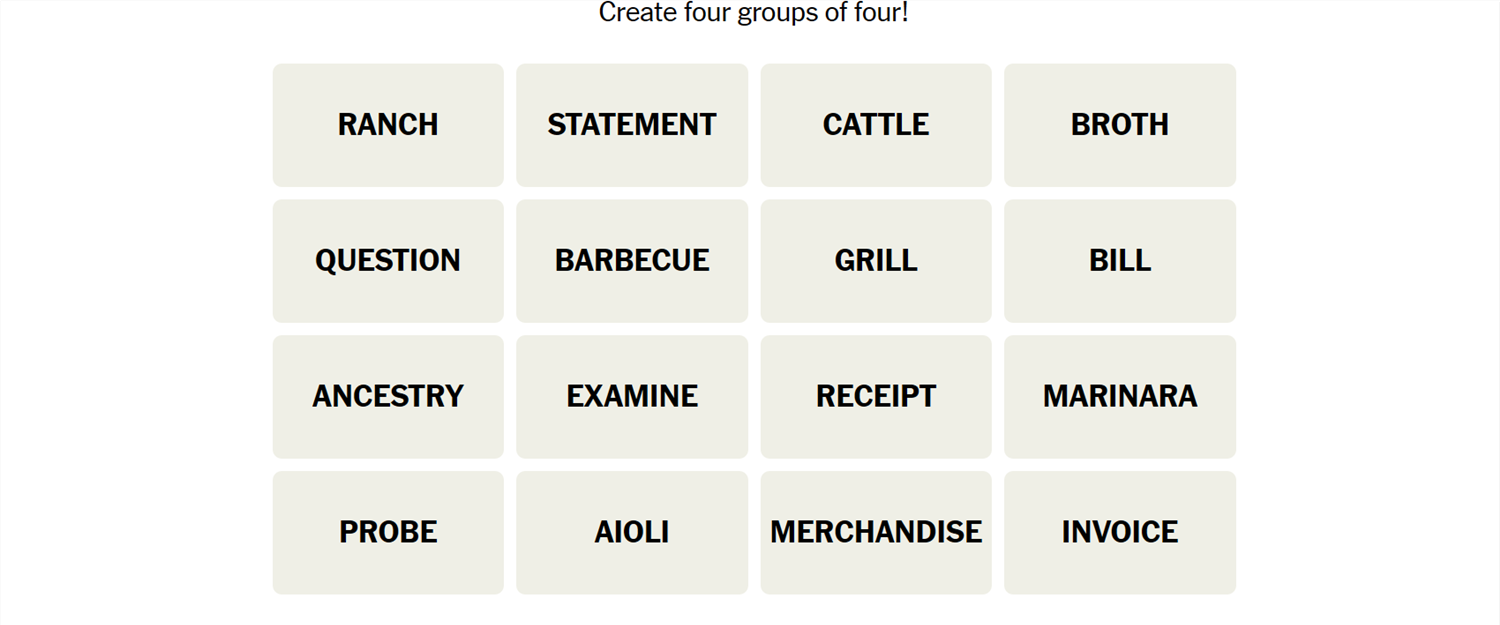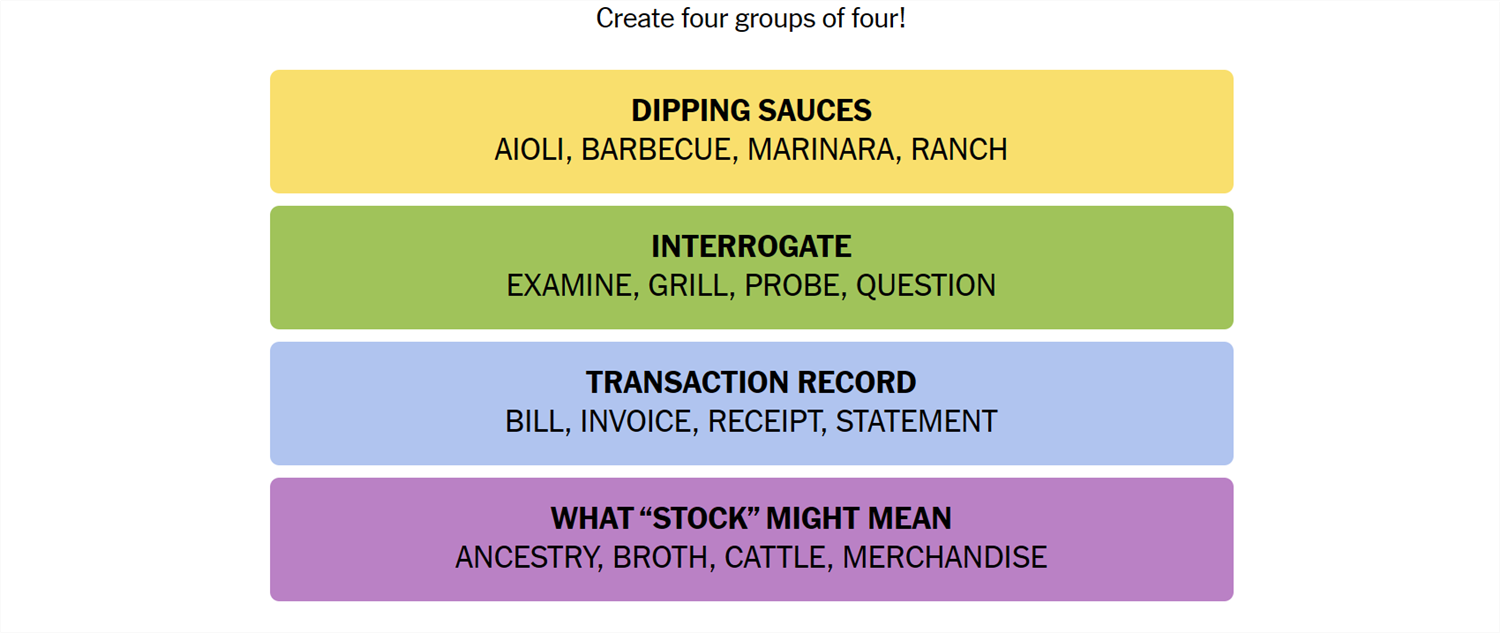Connections is a game from the New York Times that challenges you to find the association between words. It sounds easy, but it isn’t—Connections categories can be almost anything, and they’re usually quite specific. If you need a hand getting the answers, we’ve got you covered.
What Is Connections?
Connections is a game from the New York Times. The objective is simple: sort 16 words into groups of 4. Each group of words will be connected by some common idea or theme. That common element could be anything. We have seen everything from games that rely on the number of letters in the words to categories that require you to spot an extra letter at the end of the word. Sometimes they’re references to economics, other times they reference fairy tales. There is no telling what sort of association there will be between words.
Once you’re confident you understand the connection, select 4 words, then hit “Submit.” You have only four attempts in total, so don’t be too guess-happy.
Hints for Today’s Connections Categories
Here are a few small hints for the 324th Connections game to get you started:
- Yellow: Also Ketchup.
- Green: Uncomfortable
- Blue: Order History
- Purple: All of these words share a synonym, but their meanings are different.
What Are Today’s Connections Categories?
If you still need help, the actual categories are:
- Yellow: Dipping Sauces
- Green: Interrogate
- Blue: Transaction Record
- Purple: What “Stock” Might Mean
Today’s NYT Connections Answers
Dipping Sauce (Yellow):
Aioli, Barbecue, Marinara, Ranch
Interrogate (Green):
Examine, Grill, Probe, Question
Transaction Record (Blue):
Bill, Invoice, Receipt, Statement
What “Stock” Might Mean (Purple):
Ancestry, Broth, Cattle, Merchandise
How Did We Solve This Connections Game?
April 30th was pretty easy, though Purple might have been difficult to guess without narrowing it down first.
Aioli immediately brought sauces to mind, and that made it easy to pick out marinara, ranch, and then barbecue. They made up the Yellow category, which was “Dipping Sauce.”
Grill had originally caught my eye when I was looking at sauces, so I went with that next. Probe seemed to fit with a cooking implement theme, but none of the other words did. Grill can also mean to aggressively question, and that proved to be the meaning used here. Grill, examine, probe, and question all belonged to Green, which was “Interrogate.”
Bill, receipt, and invoice were together at this point in the game, and that made the connection easy to spot. The last word in Blue, “Transaction Record,” was statement.
That leaves only ancestry, broth, cattle, and merchandise. Shuffle the words as I might, no connection came to mind. It turns out that the Purple category was “What Stock Might Mean.” Very tricky.
How Do You Guess Connections Categories?
There is no quick, reliable way to approach Connections like there is with Wordle, since Connections isn’t algorithmic. However, there are a few things to keep in mind that can help.
- Look for similar parts of speech. Are some words verbs and others nouns? Are some adjectives? Try mentally grouping them based on those categories and see if any other patterns jump out at you.
- Are the words synonyms? Sometimes categories will just be synonyms for a phrase, or very close to synonyms. Don’t rely too closely on this, though. Occasionally, Connections will deliberately throw in words that are sometimes synonyms to mislead you.
- Try saying the words. Sometimes, saying the words helps. One puzzle we saw included the words go, rate, faster, clip, pace, speed, move, commute, and hurry—all of which are obviously related to the idea of motion. However, when you say them, it becomes a little more obvious that only four (go, move, hurry, faster) are things you’d actually say to prompt someone to get moving.
- Expect the red herring. Connections usually has words that could be plausibly, yet incorrectly, grouped together. Take the words Bud, Corona, and Light, as an example. You might instinctively see those three words together and assume they’re lumped together in a category related to beer—but they weren’t.
- Look for distinct words. If a word on your board doesn’t have multiple meanings or can really only be used in one context, try using that word as the basis for a category.
- Shuffle the board. Sometimes, moving words around will help you look at them in new ways.
If you didn’t solve this one, don’t feel too bad—there’s always tomorrow! And those words may align with a topic you’re interested in, giving you a leg up on the competition.






